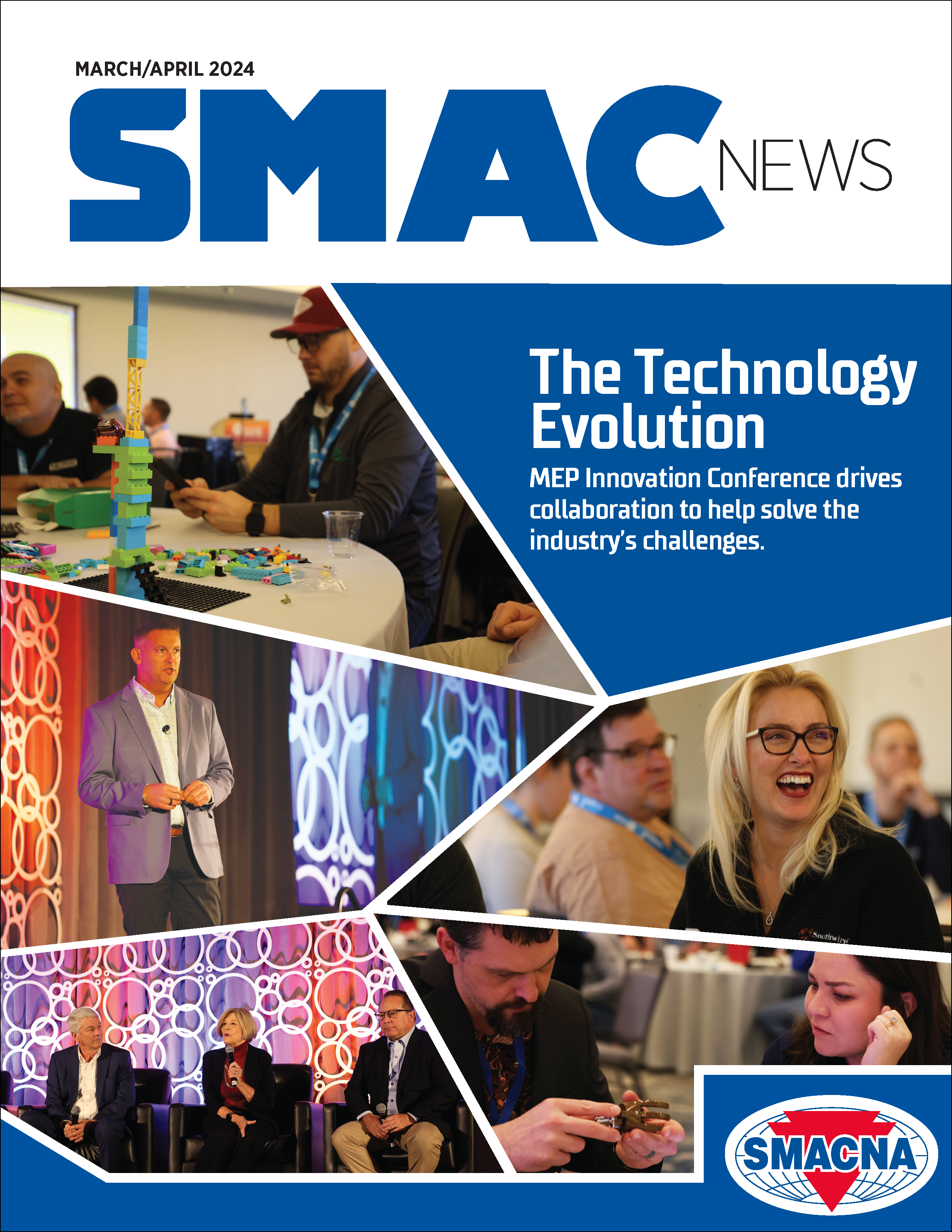Infrastructure Bill Update: Seizing Opportunities in 2024
It has been more than two years since Congress passed the bipartisan infrastructure deal (Infrastructure Investment and Jobs Act). As predicted, the $1.2 trillion dollar investment into U.S. infrastructure has been slow to reach actual job sites and

Ronald J. Eagar
It has been more than two years since Congress passed the bipartisan infrastructure deal (Infrastructure Investment and Jobs Act). As predicted, the $1.2 trillion dollar investment into U.S. infrastructure has been slow to reach actual job sites and construction companies’ wallets.
However, over the past few months we have learned more about the scope, nature and timeline of many approved projects. As of this writing, the infrastructure bill has launched a total of $400 billion of work across 40,000 projects throughout 50 states.
Among the most notable areas of opportunity for the SMACNA community are:
Clean Energy — The infrastructure deal includes the largest investment in clean energy in U.S. history. In addition to upgrading the power infrastructure and strengthening the energy grid, funding will also go to new programs that support cutting-edge clean energy technologies and the transition to a zero-emission economy.
Airports — The deal also allocated $15 billion to airport infrastructure funding. According to the Federal Aviation Administration (FAA), nearly $9 billion has been made available to airports across the country. Visit the FAA website to find projects that are planned or underway in your area. These projects are aimed at improving the supply chain by addressing repair and maintenance backlogs, reducing congestion and emissions, and driving electrification and other low-carbon technologies.
Resilience — In response to the exorbitant amount
of funding spent on weather-related and other disasters over the last decade, the deal dedicates over $50 billion to protect the nation’s infrastructure from physical, climate and cybersecurity-related threats. To date, the deal has funded more than 2,300 resilience-related projects.
GET READY TO BE PART OF THE ACTION
While there will be plenty of infrastructure projects to choose from, getting your bid selected among steep competition will require a strategic and thoughtful approach. Now is the time to start planning for your wins by taking proactive steps, such as:
- Stay on top of emerging opportunities on the Build.gov website.
- Speak with your lenders about your banking facility and ability to borrow.
- Consultant with your surety regarding your bonding capacity.
- Revisit your prequalification process to ensure it is as competitive as possible.
- Work with your CPA to plan and generate the highest quality balance sheet.
- Get updated financials from your subcontractors to identify any new areas of risk.
- Identify any skill deficiencies or talent gaps you will need to correct in your labor force.
- Use industry benchmark reports to compare your business performance to your peers and determine areas for improvement.
Of course, an important part of this planning process will be sustaining your business’s financial health while you wait for additional projects to be funded and jobs to materialize. This can be accomplished through benchmarking reports, cash flow projections, operational reviews and other tools to help position your company for optimal results.
For more information on the infrastructure bill and planning to seize the right opportunities for your business, please contact Ronald Eagar, partner and chief operating officer at Grassi.
For more information, please contact Ronald J. Eagar, CPA, CCIFP Partner at Grassi, at reagar@grassiadvisors.com or 516.336.2460.
Published: May 10, 2024
IN THIS ISSUE
Contractors Beware: Bonuses and Incentive Payments May Create Overtime Headaches
While SMACNA contractors are familiar with the concept of “overtime” — that is, paying employees time and one-half for certain hours worked — few contractors understand how overtime paid pursuant to their collective bargaining agreement (or “CBA”)
Embracing Shared Goals and Prioritizing Mutual Interests
I had the first-hand opportunity to witness the SMACNA/SMART labor management partnership at work.
Finding Happiness at Work
Culture of Respect — formerly BE4ALL (Belonging and Excellence for All) — launched in December 2021.
Government Affairs Update and Honors for Stan Kolbe
The 118th Congress is now over half over and just seven months of activity remains before the election.
How to Attract & Retain Generation Z Workers
Learn what the newest members of the workforce value most in their career choices
HVAC: Managing Risk
Industry expert shares tips on how SMACNA contractors can avoid commercial HVAC contract risks.
Infinitely Memorable
Denver contractor Scherer Metals created a sculpture celebrating aluminum’s unlimited recycling ability for Ball Corp., an aluminum packaging supplier. It sits outside Denver’s Ball Arena.
Infrastructure Bill Update: Seizing Opportunities in 2024
It has been more than two years since Congress passed the bipartisan infrastructure deal (Infrastructure Investment and Jobs Act). As predicted, the $1.2 trillion dollar investment into U.S. infrastructure has been slow to reach actual job sites and
Risk Forward to Become a Better Leader
Keynote speaker teaches performance arts tools contractors can use to improve communication.
SMACNA and Its Members Can Accomplish Great Things By Working Together
SMACNA always has a busy first quarter. We hold many committee meetings, labor relations meetings and educational programs.
SMACNA Speaker Profile: John Murdough
SMACNA educator receives CFMA’s Construction Executive of the Year award. John Murdough received the 2024 Wink Ames Memorial Award for Pioneer in Construction from the Construction Financial Management Association (CFMA).
Taking Flight
Brandt shares its work on American Airlines new catering facility at the Dallas-Fort Worth International Airport.
Technically Tailored, Creatively Executed
Skyline Heating and Cooling deployed a stealth team to problem-solve a complex, expansive residential project in Castle Pines, Colorado.
The Future is NOW
Partners in Progress Conference brings SMACNA and SMART members together to improve businesses and drive future growth.
The Hero Effect
Keynote speaker encourages Partners in Progress attendees to become everyday heroes to their customers.
The Partners in Progress Leadership Forum
Industry leaders share meaningful insights into current industry challenges and priorities.
The Technology Evolution
MEP Innovation Conference drives collaboration to help solve the industry’s challenges.
Welcome New SMACNA Members
New SMACNA Members


